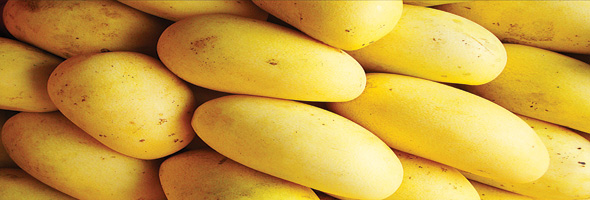PAUL ICAMINA

The prospect of planting mango has been made sweeter to farmers.
Multi-location research has identified natural control for common pests and diseases as well as other interventions benefiting mango, a highly valued crop that brings income to small farmers and dollars to the nation’s coffers.
The Philippines is the world’s seventh leading mango producer. Fresh mango is the leading dollar earner, consisting 59 percent of total mango export, followed by dried mangoes, mango puree, juice concentrates and mango juices.
Mango production dropped by 10 percent during the fourth quarter of 2017. The decline was attributed by the National Statistics Authority to farmers who were discouraged to conduct flower induction activities due to the occurrence of intermittent rains in the Zamboanga Peninsula (Zamboanga del Norte and Zamboanga del Sur).
Frequent rains also led to lesser fruits developed during the flowering stage in Northern Mindanao, especially in Misamis Occidental.
The top mango producers last year were Zamboanga Peninsula (where a fourth of national production came from), followed by Caraga (Agusan del Norte, Agusan del Sur, Dinagat Islands, Surigao del Norte, Surigao del Sur) then Northern Mindanao.
These provinces will benefit most from a project funded by the Australian Centre for International Agricultural Research (ACIAR) and the Philippine Council for Agriculture, Aquatic and Natural Resources Research and Development (PCAARRD), Department of Science and Technology.
Mango is one of the priority commodities listed in PCAARRD’s National R&D Agenda and is included in the ACIAR-PCAARRD Horticulture Program on Fruits and Vegetables.
The project aims to improve the quality and yield of mango in order to reduce product losses due to pests and diseases and decrease production costs. It aims to prevent the decline in production and quality of fruits attributed to pests and diseases.
The research is geared towards improving fruit quality by developing effective insect control and Integrated Pest Management (IPM) solutions. Adoption of sustainable IPM practices could improve quality and yield of mango and increase farmers’ income by 156 percent.
Another target is to improve fruit size and yield by optimizing nutrition and canopy management. The project initiated a demonstration and training on canopy management in Davao Occidental and Davao del Sur.
Spraying trees with plant growth regulators (PGR) could also reduce the incidence of blossom blight compared with multiple sprays of fungicide and could give higher average yield per tree. Auxin, cytokinin, gibberellic acid and salicylic acid were the PGRs used in the study.
PGRs are potential controls for mango fungal diseases, according to Dr. Virgie Ugay of USeP.
PGRs, commonly known as plant hormones, are chemical substances that promote the growth of plant cells, tissues and organs. Auxins, for example, stimulate cell elongation and influence root initiation and the development of auxiliary buds, flowers and fruits.
Ultimately, the research project aims to improve mango farmers’ livelihoods and profits by developing and implementing an integrated management package of “best practices.” A national survey in eight major mango growing areas of the Philippines was completed and is expected to provide information as foundation of “best bet” management guidelines.




